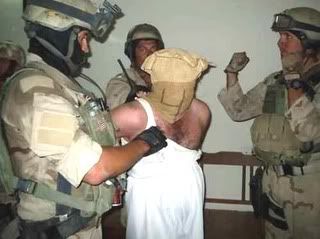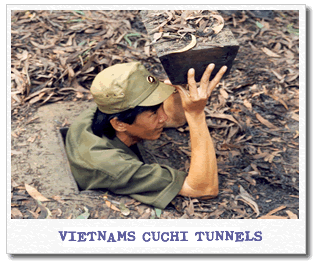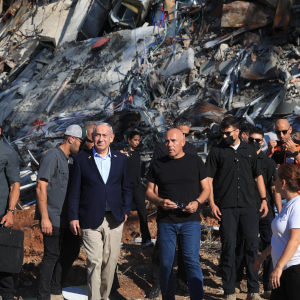This is an expanded version of an earlier post.
Code Pink has gone to Iran (starting, I believe, November 22), on a friendly, people's diplomacy kind of mission. Accodring to LA Progressive's Linda Milazzo (Nov. 24) and according to Code Pink's blog, their entourage is having a wonderful time in Iran, being led in part by Rostam Pourzal, a lobbyist for the Iranian government (at least, that's what he should legally register as, really!). He has taken the Code Pink activists to some ministries, as well as (on the civil society side) cafes, restaurants, bazaars, and places of gathering where they have met with so many amazing women and men, all of whom were really cool, compassionate and intelligent, and above all peace-loving. People have acted generally enthusiastically toward the American people-diplomats upon learning that they, Code Pink's Jodie Evans and Medea Benjamin, were on a people's mission for peace. It's like, Oh my god! They want peace!
Benjamin's descriptions are at times patronizing and at times quite frustrating to read, though I should admit she sounds sincere in her intent. I do doubt their judgment though. Code Pink did support Obama, and Jodie Evans, in an interview on Air America radio program, Clout, sounded ecstatic about Obama's election, saying, "War is over!" (Meaning it not literally, of course, but believing that with Obama as president, the whole mess will soon come to a speedy end.) As if!
Anyway, on the patronizing side ... Here's the problem: Benjamin sounds surprised to have met so many interesting, intelligent people who like and want peace!
Why would that be surprising? It can only be surprising if she were going by some stereotypes of what Iranians are supposed to be like. Of course most people are peace loving! Most humans in every country on every continent of the world are peace loving. That's why wars are so unpopular everywhere!
The other side of it is, of course, that the Code Pink entourage are either unaware, or have not fully taken in the consequences, of the fact that some 80% of the Iranian population do not support the theocratic setup. The government of Iran knows this. So, clearly an overwhelming majority of the population consists of highly intelligent people indeed! No surprise then that Code Pink delegation ran into some of these intelligent human beings living in Iran.
The sad part, though, is that because the itinerary must have been manipulated by the government, partly due to their own foresight and partly due to Rostam Pourzal's, I can only imagine that the groups who have come to discourse with Code Pink in all the arranged as well as the spontaneous-seeming situations must have been packed with all the 'right' people (at least some, anyway); let's face it, if you don't speak Farsi, and especially if you are dependent on government-provided people to arrange your contacts, you would most likely meet only with the affluent or those connected to the government - such as the women parliamentarians Code Pink met or other ministers they were supposed to meet - or else you will see an assortment of middle class professionals and others; all of whom, quite frankly, are not likely to be openly critical of the theocratic government around lobbyists for the regime (such as Pourzal), or other handlers provided by the government.
So, most likely Code Pink is not going to communicate with the people whose voices are drowned out in the international macho games of intrigue played out between different-level bullys. So, Code Pink will not get to meet with and talk to the most venerable of the society, the working classes, for example, or their unionist leaders (mostly in jail), nor with those whose rights have been viciously violated, such as political activists on behalf of students' rights, minority rights (e.g., Kurdish activists), women's rights and civil libertarians and free speech activists.
One interesting project that Code Pink is working on, according to their blog, is to record some video clips in Iran to be posted on YouTube, as messages to Obama. While meeting with a group of Iranian peace activists, Miles for Peace (a group of cyclists for peace), Code Pink mentioned their YouTube video series Idea. "We told them about the YouTube series we wanted to make called Iran talks to Obama, with Iranians from all walks of life giving advice to the new U.S. president. They loved the idea, and signed up right then and there to be interviewed."
Now, first of all, Obama does not listen to ordinary American people 'from all walks of life', so to think that he would listen to Eye-rainian regular folk is just absurd thinking. But, the irony of all ironies about this video project is that just last week, the Iranian government started blocking some five MILLION website; included in the list is, you guessed it, YouTube! Also included are, of course, blogs and websites expressing dissent. The government says the blocked websites are 'immoral and antisocial' (pornographic ones presumably). But what is immoral or anti-social about dissenting against a theocratic dictatorship?
Here is another example of people Code Pink will likely not get to meet, or be allowed to even talk about. As an anti-war organization with feminist sympathies, Code Pink entourage should love to visit some of the women from Change for Equality campaign (or better known as One Million Signature campaign), some of whom are prisoners in Evin prison. Their 'crime'? Peacefully asking people to put their names and signatures on a petition to be presented, peacefully, to the Iranian government asking it for a simple thing, namely recognizing that women are legally equal to men. I deeply doubt that Code Pink sought from Ahmadinejad an opportunity to meet some of the activists of this organization in prison, just to hear their stories.
Code Pink's stated objective for their Iran trip is to create a people-to-people contact. As they have stated it, they wish to repeat such trips, and would like them to be reciprocated; meaning, they would push the Obama administration to allow similar citizens' groups from Iran to travel to the U.S. Fair enough, and an agreeable enough mission.
But, from its first steps, the trip has been one of a people-to-government mission. The trip was made possible by an invitation of president Ahmadinejad, an invitation solicited by Code Pink in a September meeting between Ahmadinejad and a group of American peace activists. Having arrived in Iran, at least from their own reports (available on their blog), it seems that most of the people they are meeting are government people, or people whom the government has arranged for them to meet.
Another shortcoming is this: how about bringing some news of solidarity and hope to the people who most deserve and need it, those who are persecuted by the Iranian government? That would be a real people-to-people (social activist-to-social activist, that is) meeting of minds. Thousands of political prisoners languish in Iranian prisons without having committed any crime whatsoever, other than holding certain political beliefs at variance with the theocratic setup. The only reason they are in prison is related to those ideas; i.e., for activities such as speaking up against injustices practiced routinely in Iran. Does Code Pink, or any other U.S. leftists, feel any obligation to reach out to these people?
Code Pink has created a situation in which they are going along with a policy of no-arguments with a theocratic dictatorship, no criticisms and no explanations asked. It's an odious form of 'Don't ask, don't tell'.
Now, in case there are some cultural relativists, who spew out garbage such as, "Well, having an Islamic state is in their culture!" it must be said unequivocally, NO, it is not in OUR culture. It is in the culture of a small minority in our country, the same minority that wields very formidable instruments of oppression, and the same minority that has enacted repressive medieval laws, which the state uses to imprison people who have 'acted illegally'.
Since Code Pink plans to repeat such trips, we ask that they reflect on their November 2008 trip, and in their future trips seek to find ways to arrange for visits to Evin and Gohar-dasht prisons, which hold most of the political prisoners in Iran. That would be a welcome complement to their people-to-government trip they have just concluded.
Israel says Trump’s plan to resettle nearly two million Palestinians from
Gaza is ‘still active’
-
The White House did not deny that president’s plan to transfer nearly 2
million Palestinians out of Gaza was still a possibility when asked by The
Indepe...

















